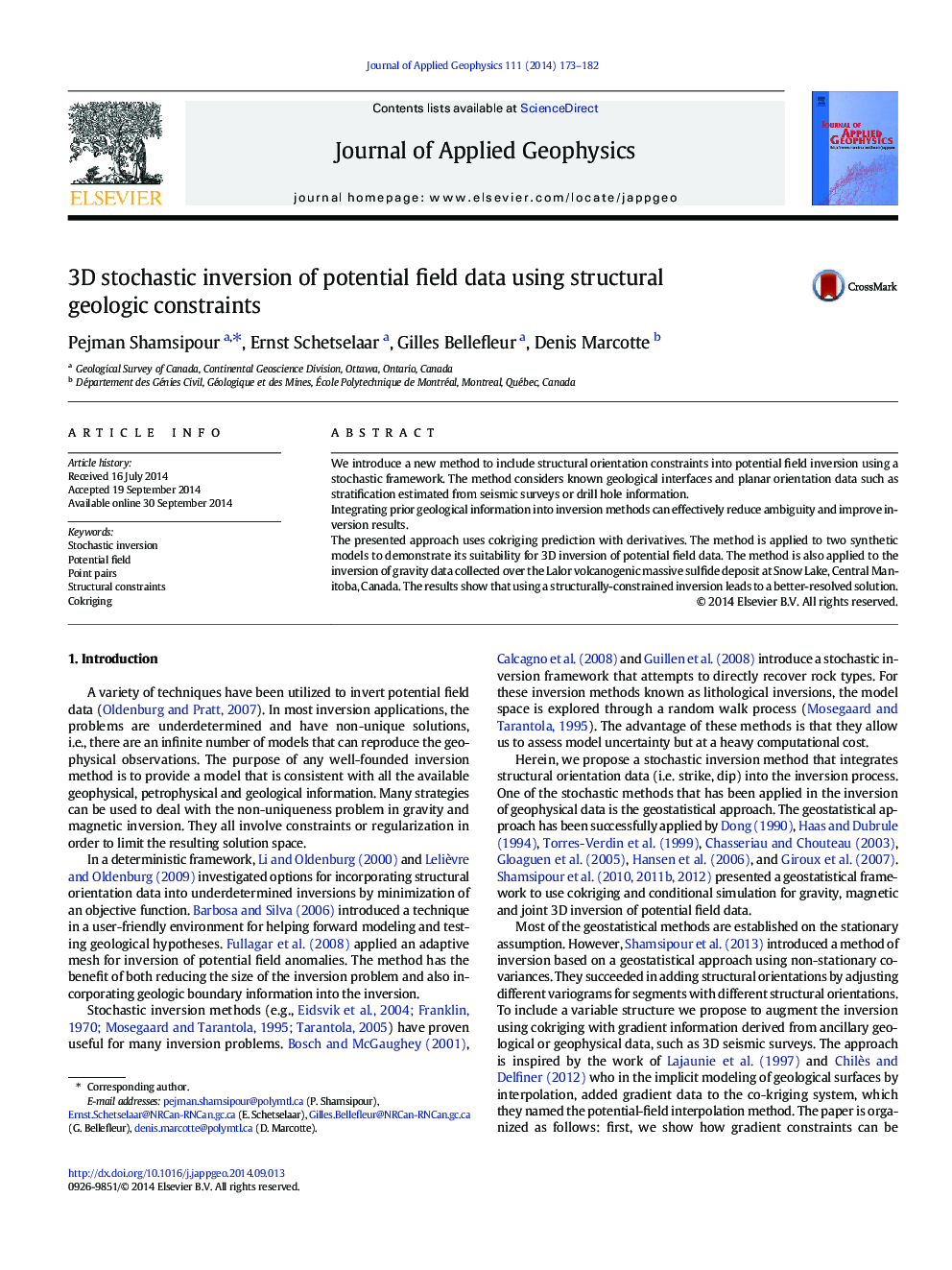| Article ID | Journal | Published Year | Pages | File Type |
|---|---|---|---|---|
| 4740100 | Journal of Applied Geophysics | 2014 | 10 Pages |
•A new method is introduced to include structural orientation constraints into inversion method.•The method considers known geological interfaces and planar orientation data.•The method is applied to the Lalor volcanogenic massive sulfide deposit at Snow Lake, Canada.•The results show that using the new method of inversion leads to a better-resolved solution.
We introduce a new method to include structural orientation constraints into potential field inversion using a stochastic framework. The method considers known geological interfaces and planar orientation data such as stratification estimated from seismic surveys or drill hole information.Integrating prior geological information into inversion methods can effectively reduce ambiguity and improve inversion results.The presented approach uses cokriging prediction with derivatives. The method is applied to two synthetic models to demonstrate its suitability for 3D inversion of potential field data. The method is also applied to the inversion of gravity data collected over the Lalor volcanogenic massive sulfide deposit at Snow Lake, Central Manitoba, Canada. The results show that using a structurally-constrained inversion leads to a better-resolved solution.
